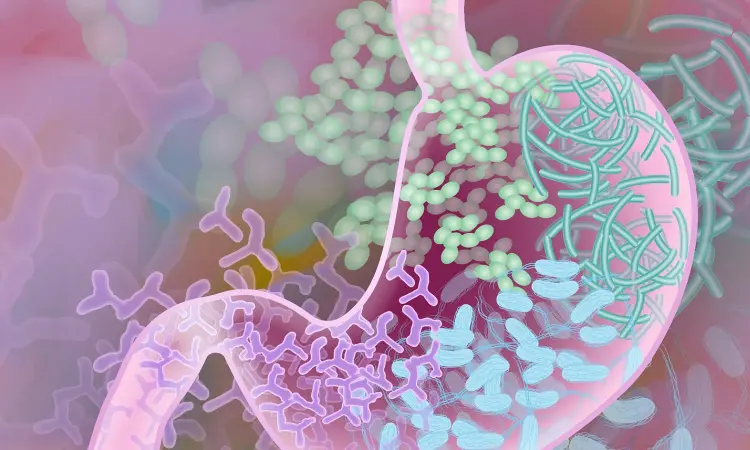- Home
- Medical news & Guidelines
- Anesthesiology
- Cardiology and CTVS
- Critical Care
- Dentistry
- Dermatology
- Diabetes and Endocrinology
- ENT
- Gastroenterology
- Medicine
- Nephrology
- Neurology
- Obstretics-Gynaecology
- Oncology
- Ophthalmology
- Orthopaedics
- Pediatrics-Neonatology
- Psychiatry
- Pulmonology
- Radiology
- Surgery
- Urology
- Laboratory Medicine
- Diet
- Nursing
- Paramedical
- Physiotherapy
- Health news
- Fact Check
- Bone Health Fact Check
- Brain Health Fact Check
- Cancer Related Fact Check
- Child Care Fact Check
- Dental and oral health fact check
- Diabetes and metabolic health fact check
- Diet and Nutrition Fact Check
- Eye and ENT Care Fact Check
- Fitness fact check
- Gut health fact check
- Heart health fact check
- Kidney health fact check
- Medical education fact check
- Men's health fact check
- Respiratory fact check
- Skin and hair care fact check
- Vaccine and Immunization fact check
- Women's health fact check
- AYUSH
- State News
- Andaman and Nicobar Islands
- Andhra Pradesh
- Arunachal Pradesh
- Assam
- Bihar
- Chandigarh
- Chattisgarh
- Dadra and Nagar Haveli
- Daman and Diu
- Delhi
- Goa
- Gujarat
- Haryana
- Himachal Pradesh
- Jammu & Kashmir
- Jharkhand
- Karnataka
- Kerala
- Ladakh
- Lakshadweep
- Madhya Pradesh
- Maharashtra
- Manipur
- Meghalaya
- Mizoram
- Nagaland
- Odisha
- Puducherry
- Punjab
- Rajasthan
- Sikkim
- Tamil Nadu
- Telangana
- Tripura
- Uttar Pradesh
- Uttrakhand
- West Bengal
- Medical Education
- Industry
Histamine-producing gut bacteria can trigger chronic abdominal pain

Researchers from McMaster University and Queen's University have discovered a gut bacterial 'super-producer' of histamine that can cause pain flare-ups in some patients with irritable bowel syndrome (IBS).
The culprit is what has now been named Klebsiella aerogenes, the McMaster-Queen (MQ) strain, identified in up to 25 per cent of gut microbiota samples from patients with IBS. Researchers examined stool microbiota samples from both Canadian and American patient cohorts.
"We followed up these patients for several months and found high levels of stool histamine at the time when the patients reported severe pain, and low stool histamine when they were pain-free," said senior author Premysl Bercik, professor of medicine of McMaster's Michael G. DeGroote School of Medicine and a gastroenterologist.
The McMaster-Queen's research team pinpointed the bacterium Klebsiella aerogenes as the key histamine producer by studying germ-free mice colonized with gut microbiota from patients with IBS. They also colonized some mice with gut microbiota from healthy volunteers as a control group.
The study found that the bacterium Klebsiella aerogenes converts dietary histidine, an essential amino acid present in animal and plant protein, into histamine, a known mediator of pain.
The bacterial histamine then activates the gut immune system through histamine-4 receptor, which draws immune mast cells into the intestines. These activated mast cells produce even more histamine and other pain-signalling mediators, triggering inflammation and pain.
"Now that we know how the histamine is produced in the gut, we can identify and develop therapies that target the histamine producing bacteria," said first author Giada de Palma, assistant professor of medicine at McMaster.
The study found that when the mice colonized with histamine producing bacteria were fed a diet low in fermentable carbohydrates, bacterial histamine production dramatically decreased. This was due to change in bacterial fermentation and acidity within the gut, which inhibited the bacterial enzyme responsible for histamine production.
Bercik said that these results explain the beneficial effects of a low fermentable diet observed in patients with IBS.
It is known that patients with IBS have more mast cells in their intestines, and that some of them improve with treatments targeting mast cells or histamine, such as mast cell stabilizers or antihistamines.
"Although mast cell treatment in IBS has been explored, a novel approach based on our research would be targeting the bacterial histamine production or H4R pathways," Bercik said.
The McMaster-Queen's study explains why increased mast cells are found in IBS and suggests that H4 receptor pathway plays a major role in this process.
"If we block the H4 receptors, then we can prevent recruitment of mast cells to the colon and subsequently the development of abdominal pain," said senior co-author Stephen Vanner, professor of medicine at Queen's University.
"Many but not all IBS patients will benefit from therapies targeting this histamine driven pathway," said co-first author David Reed, assistant professor of medicine at Queen's. Reed said that one or more biomarkers of this pathway could be used to find the patients most likely to benefit.
Reference:
Giada De Palma, Chiko Shimbori, David E. Reed, Yang Yu, Virginia Rabbia, Jun Lu, Nestor Jimenez-Vargas, Jessica Sessenwein, Cintya Lopez-Lopez, Marc Pigrau, Josue Jaramillo-Polanco, Yong Zhang, Lauren Baerg, Ahmad Manzar, Julien Pujo, Xiaopeng Bai, Maria Ines Pinto-Sanchez, Alberto Caminero, Karen Madsen, Michael G. Surette, Michael Beyak, Alan E. Lomax, Elena F. Verdu, Stephen M. Collins, Stephen J. Vanner, Premysl Bercik. Histamine production by the gut microbiota induces visceral hyperalgesia through histamine 4 receptor signaling in mice. Science Translational Medicine, 2022; 14 (655) DOI: 10.1126/scitranslmed.abj1895
Dr Kamal Kant Kohli-MBBS, DTCD- a chest specialist with more than 30 years of practice and a flair for writing clinical articles, Dr Kamal Kant Kohli joined Medical Dialogues as a Chief Editor of Medical News. Besides writing articles, as an editor, he proofreads and verifies all the medical content published on Medical Dialogues including those coming from journals, studies,medical conferences,guidelines etc. Email: drkohli@medicaldialogues.in. Contact no. 011-43720751


